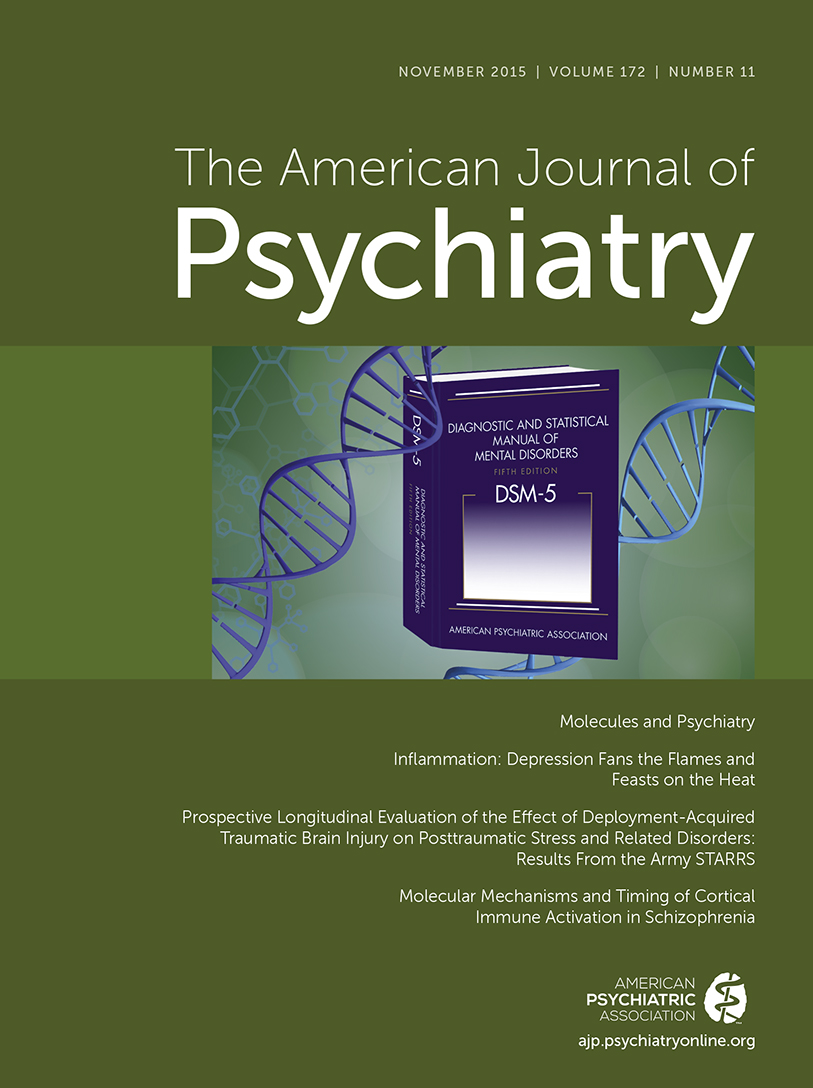Sudden-Onset Dystonia in a Patient Taking Asenapine: Interaction Between Ciprofloxacin and Asenapine Metabolism
To the Editor: Asenapine is a newer second-generation antipsychotic that is primarily metabolized by uridine 5′-diphospho-glucuronosyltransferase 1A4 (UGT1A4) and cytochrome P450 (CYP)1A2 (1). When asenapine is coadministered with inducers or inhibitors of CYP enzymes, antipsychotic plasma levels may be reduced or increased, respectively, resulting in a reduced effectiveness of the antipsychotic or an increased risk of adverse events (2). Here, we report a potential drug-drug interaction leading to an adverse effect during a psychiatric inpatient hospitalization.
A 44-year-old nonsmoking single white woman with a history of bipolar I disorder was admitted for worsening depressed mood. She had been treated with 5 mg h.s. of asenapine for 1.5 months prior to admission. Her history included a severe dystonic reaction to haloperidol. Home medications were continued and included 20 mg/day of baclofen, 60 mg/day of dexlansoprazole, 20 mg/day of fluoxetine, 1 mg/day of lorazepam, and 2,250 mg/day of divalproex. For treatment of a urinary tract infection, 500 mg b.i.d. of ciprofloxacin was initiated at admission. Thirty-three hours after starting ciprofloxacin, the patient was noted to be unable to close her jaw, consistent with an acute dystonic reaction. She was given 50 mg of diphenhydramine intramuscularly, and the dystonia resolved. Ciprofloxacin was discontinued and switched to 100 mg b.i.d. of nitrofurantoin, and asenapine was continued with no further complications at the time of discharge.
Discussion
This report highlights a potential drug-drug interaction between asenapine and ciprofloxacin that has not been previously reported. Ciprofloxacin is a potent inhibitor of CYP1A2 but not of UGT1A4 (1); interactions between it and second-generation antipsychotics that are metabolized through the CYP1A2 pathway have been reported. According to a published case report, coadministration of ciprofloxacin and olanzapine increases olanzapine serum levels (3). Ciprofloxacin pharmacokinetics (a half-life of 4 hours and steady state after 3 days [1]) demonstrate that it was the identifiable precipitant of this patient’s dystonia. Other possible contributing factors include the effect of inflammation and infection, including urinary tract infections, on down-regulation of CYP1A2 (4) as well as potential inhibition of asenapine glucuronidation by valproate (5). These factors may have exacerbated the patient’s symptoms, although the dystonia was not noted until after initiation of ciprofloxacin. Utilization of a rating scale to assess the likelihood of drug-drug interaction indicated that this inference is “probable” (6).
This case may serve as a reminder that we must be mindful of drug-drug interactions when prescribing second-generation antipsychotics.
1 : Asenapine review, part I: chemistry, receptor affinity profile, pharmacokinetics and metabolism. Expert Opin Drug Metab Toxicol 2014; 10:893–903Crossref, Medline, Google Scholar
2 : Drug-drug interactions associated with second-generation antipsychotics: considerations for clinicians and patients. Psychopharmacol Bull 2007; 40:77–97Medline, Google Scholar
3 : Drug-induced QT interval prolongation after ciprofloxacin administration in a patient receiving olanzapine. Int J Cardiol 2006; 109:273–274Crossref, Medline, Google Scholar
4 : Impact of infectious and inflammatory disease on cytochrome P450-mediated drug metabolism and pharmacokinetics. Clin Pharmacol Ther 2009; 85:434–438Crossref, Medline, Google Scholar
5 : Interactions between antiepileptics and second-generation antipsychotics. Expert Opin Drug Metab Toxicol 2012; 8:311–334Crossref, Medline, Google Scholar
6 : Proposal for a new tool to evaluate drug interaction cases. Ann Pharmacother 2007; 41:674–680Crossref, Medline, Google Scholar



